
How to Use ttl to rs485: Examples, Pinouts, and Specs
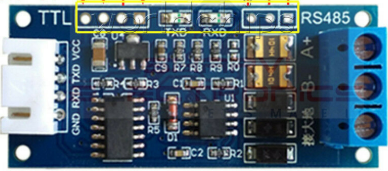
 Design with ttl to rs485 in Cirkit Designer
Design with ttl to rs485 in Cirkit DesignerIntroduction
The TTL to RS485 converter is a versatile electronic component designed to bridge the gap between TTL (Transistor-Transistor Logic) devices and RS-485 serial communication systems. It enables seamless communication by converting TTL-level signals to RS-485 differential signals, which are ideal for long-distance data transmission and environments with high electrical noise. RS-485 is widely used in industrial automation, building management systems, and other applications requiring robust and reliable communication over extended distances.
Explore Projects Built with ttl to rs485
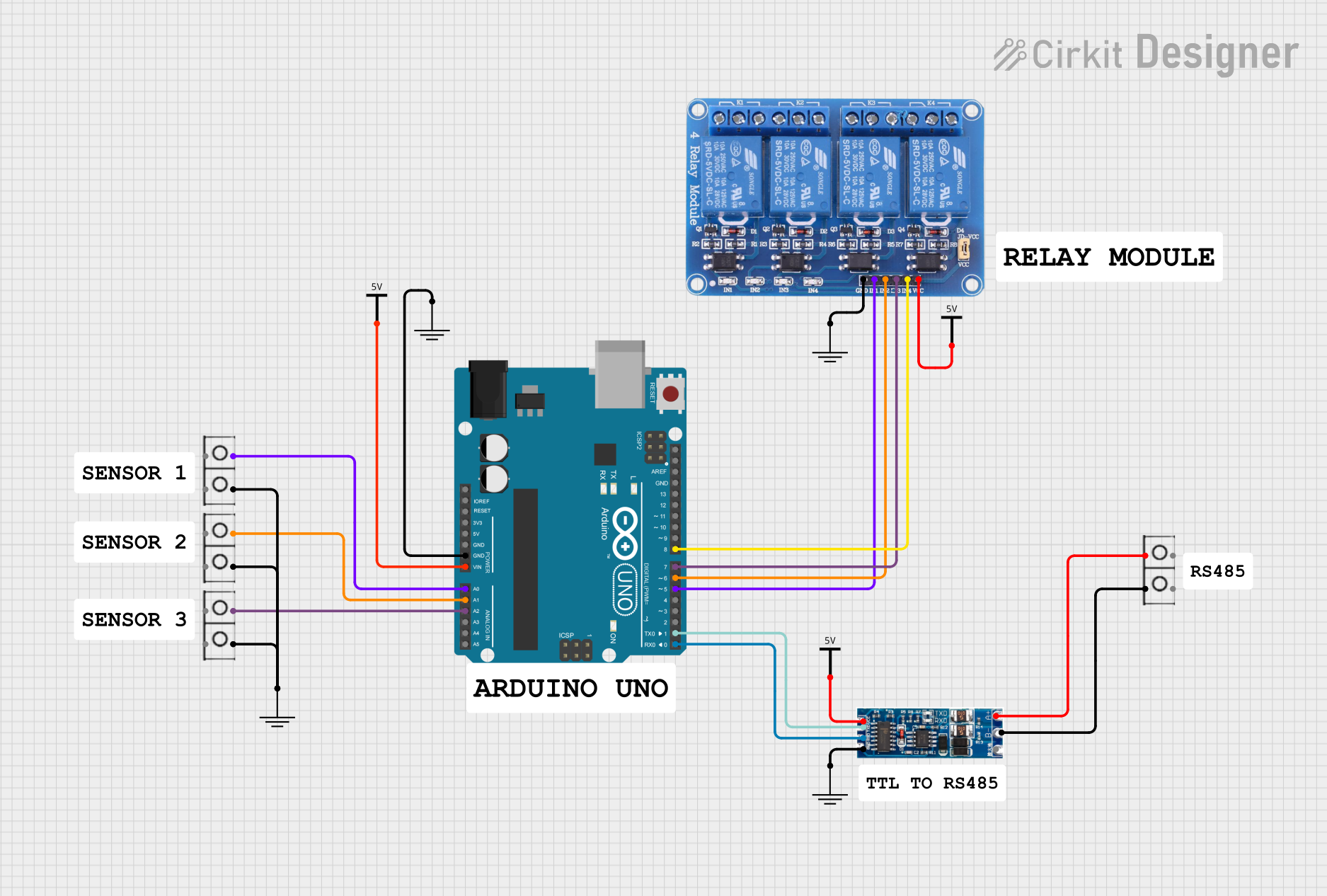
 Open Project in Cirkit Designer
Open Project in Cirkit Designer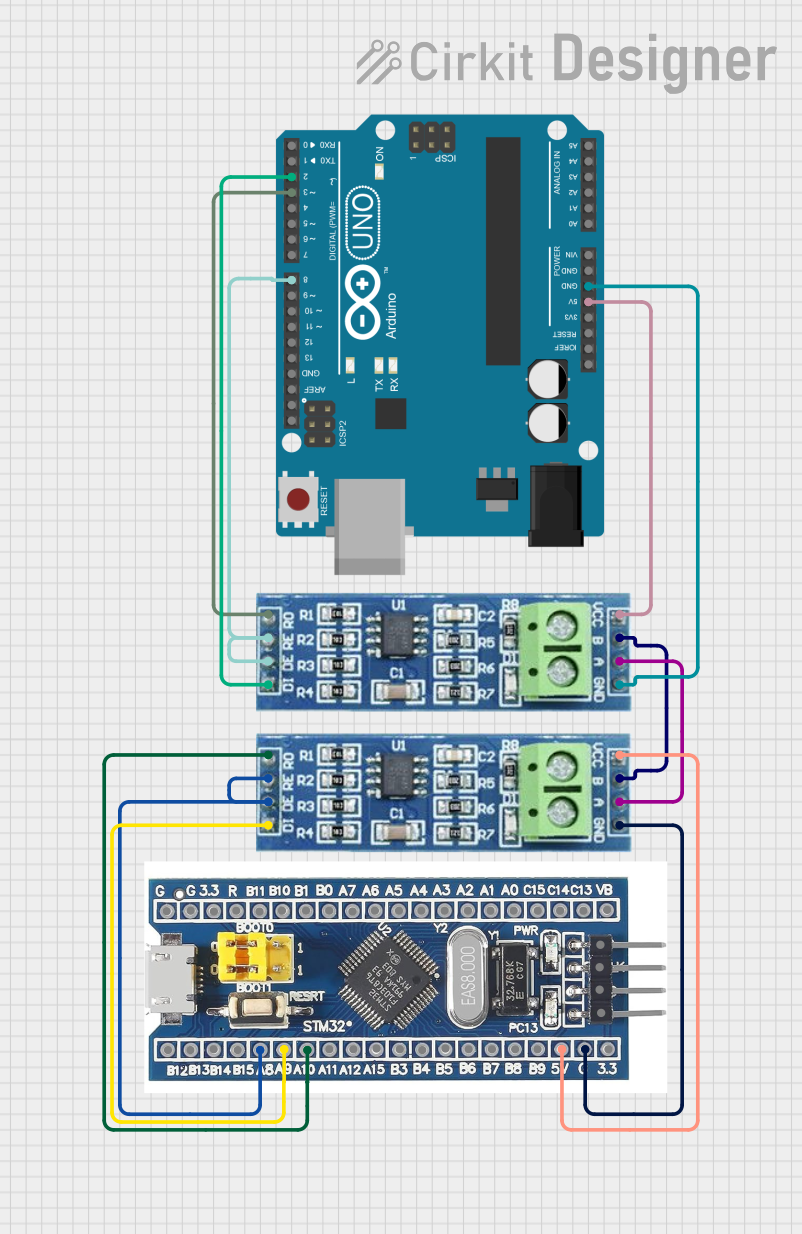
 Open Project in Cirkit Designer
Open Project in Cirkit Designer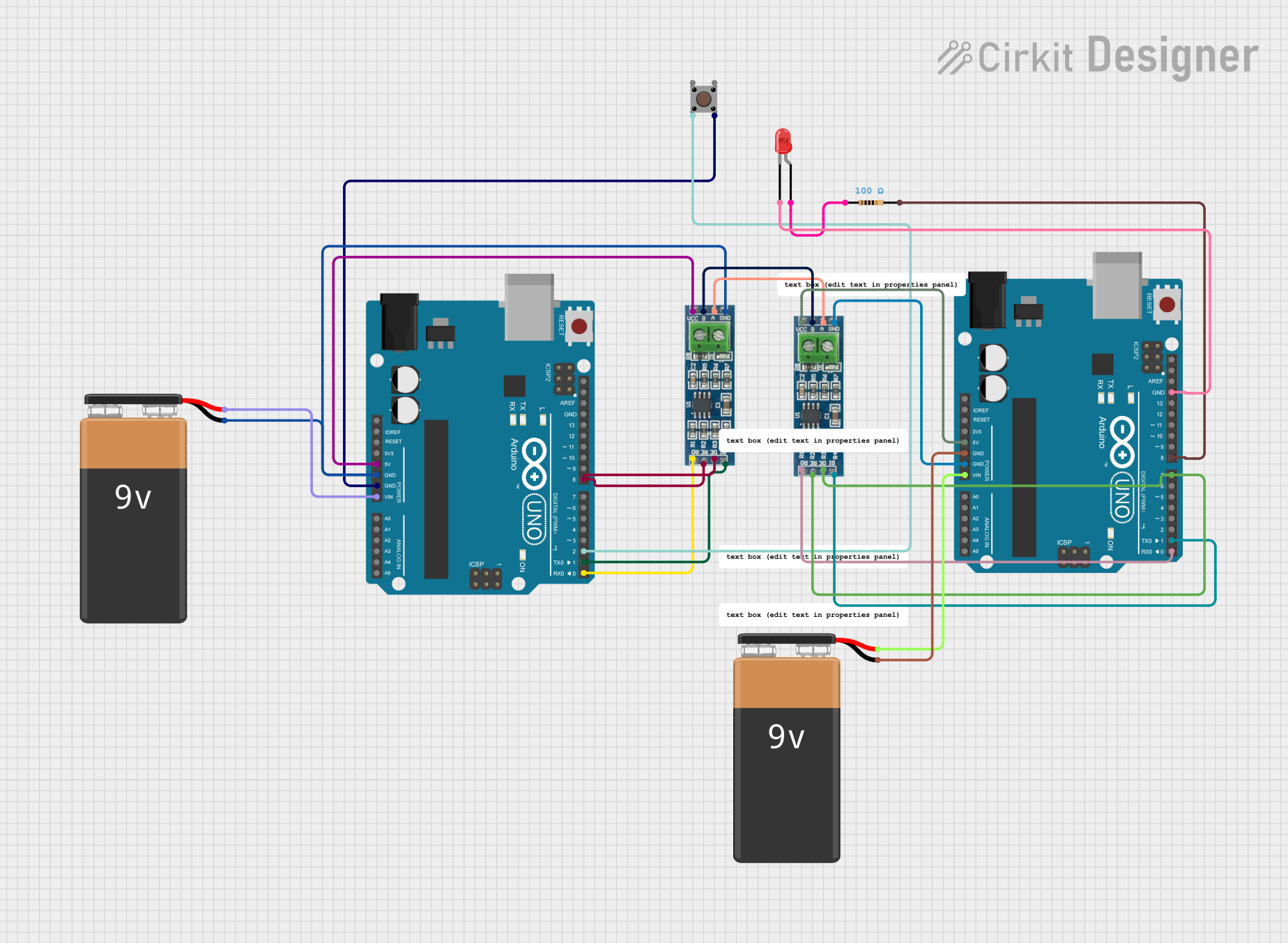
 Open Project in Cirkit Designer
Open Project in Cirkit Designer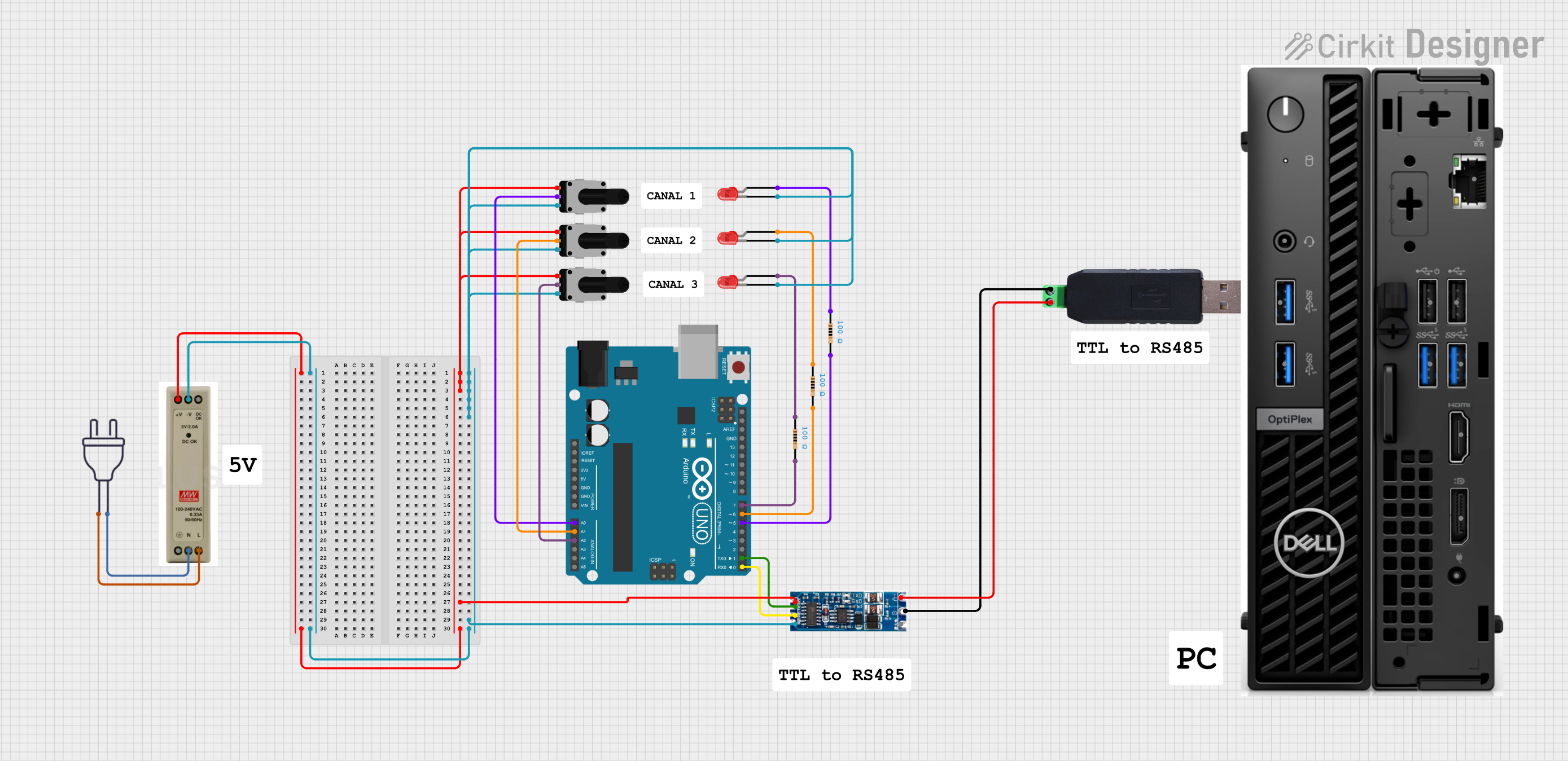
 Open Project in Cirkit Designer
Open Project in Cirkit DesignerExplore Projects Built with ttl to rs485

 Open Project in Cirkit Designer
Open Project in Cirkit Designer
 Open Project in Cirkit Designer
Open Project in Cirkit Designer
 Open Project in Cirkit Designer
Open Project in Cirkit Designer
 Open Project in Cirkit Designer
Open Project in Cirkit DesignerCommon Applications and Use Cases
- Industrial automation and control systems
- Building management systems (e.g., HVAC, lighting control)
- Long-distance serial communication (up to 1.2 km)
- Data acquisition systems
- Interfacing microcontrollers (e.g., Arduino, Raspberry Pi) with RS-485 networks
Technical Specifications
The following table outlines the key technical details of the TTL to RS485 converter:
| Parameter | Value |
|---|---|
| Operating Voltage | 3.3V to 5V DC |
| Communication Protocol | RS-485 (differential signaling) |
| Baud Rate | Up to 115200 bps |
| Maximum Communication Distance | Up to 1200 meters (4000 feet) |
| Operating Temperature | -40°C to 85°C |
| Power Consumption | Low power consumption (< 50 mA) |
Pin Configuration and Descriptions
The TTL to RS485 converter typically has the following pin layout:
| Pin Name | Description |
|---|---|
| VCC | Power input (3.3V to 5V DC) |
| GND | Ground connection |
| TXD | TTL transmit pin (connect to the TX pin of the microcontroller) |
| RXD | TTL receive pin (connect to the RX pin of the microcontroller) |
| A (D+) | RS-485 differential signal positive terminal |
| B (D-) | RS-485 differential signal negative terminal |
| DE | Driver enable pin (active high, controls RS-485 driver mode) |
| RE | Receiver enable pin (active low, controls RS-485 receiver mode) |
Usage Instructions
How to Use the Component in a Circuit
- Power the Converter: Connect the VCC pin to a 3.3V or 5V power source and the GND pin to the ground.
- Connect TTL Signals:
- Connect the TXD pin of the converter to the TX pin of your microcontroller.
- Connect the RXD pin of the converter to the RX pin of your microcontroller.
- Connect RS-485 Signals:
- Connect the A (D+) and B (D-) pins to the RS-485 bus.
- Ensure proper termination resistors (typically 120 ohms) are used at both ends of the RS-485 bus for signal integrity.
- Control DE and RE Pins:
- Set the DE pin high to enable the RS-485 driver for transmitting data.
- Set the RE pin low to enable the RS-485 receiver for receiving data.
Important Considerations and Best Practices
- Voltage Compatibility: Ensure the operating voltage of the converter matches the voltage level of your microcontroller.
- Termination Resistors: Use 120-ohm termination resistors at both ends of the RS-485 bus to minimize signal reflections.
- Biasing Resistors: Add pull-up and pull-down resistors on the RS-485 bus to maintain a known idle state when no devices are transmitting.
- Cable Selection: Use twisted-pair cables for RS-485 communication to reduce noise and improve signal integrity.
- Grounding: Ensure all devices on the RS-485 bus share a common ground to prevent communication errors.
Example Code for Arduino UNO
Below is an example of how to use the TTL to RS485 converter with an Arduino UNO for basic communication:
// Example: Sending data from Arduino UNO via TTL to RS485 converter
#define DE_PIN 2 // Define the Driver Enable pin
#define RE_PIN 3 // Define the Receiver Enable pin
void setup() {
Serial.begin(9600); // Initialize serial communication at 9600 baud
pinMode(DE_PIN, OUTPUT); // Set DE pin as output
pinMode(RE_PIN, OUTPUT); // Set RE pin as output
digitalWrite(DE_PIN, HIGH); // Enable RS-485 driver (transmit mode)
digitalWrite(RE_PIN, LOW); // Enable RS-485 receiver (receive mode)
}
void loop() {
// Send a message over RS-485
digitalWrite(DE_PIN, HIGH); // Enable transmit mode
Serial.println("Hello, RS-485!"); // Send data
delay(100); // Short delay to ensure data is sent
digitalWrite(DE_PIN, LOW); // Disable transmit mode (optional)
}
Troubleshooting and FAQs
Common Issues and Solutions
No Communication on RS-485 Bus:
- Verify that the DE and RE pins are correctly configured for transmit and receive modes.
- Check the wiring of the A (D+) and B (D-) pins to ensure proper polarity.
- Ensure termination resistors are installed at both ends of the RS-485 bus.
Data Corruption or Noise:
- Use shielded twisted-pair cables to reduce electromagnetic interference.
- Verify that all devices on the RS-485 bus share a common ground.
Overheating of the Converter:
- Ensure the operating voltage does not exceed the specified range (3.3V to 5V).
- Check for short circuits or incorrect wiring.
Intermittent Communication Failures:
- Verify the baud rate settings of all devices on the RS-485 bus.
- Check for loose connections or damaged cables.
FAQs
Q: Can I use the TTL to RS485 converter with a 3.3V microcontroller?
A: Yes, the converter supports both 3.3V and 5V logic levels. Ensure the VCC pin is connected to the appropriate voltage source.
Q: How many devices can I connect to the RS-485 bus?
A: RS-485 supports up to 32 devices on a single bus. For larger networks, use repeaters.
Q: Do I need to manually control the DE and RE pins?
A: Yes, in most cases, you need to control these pins to switch between transmit and receive modes. Some converters may have automatic flow control.
Q: What is the maximum cable length for RS-485 communication?
A: The maximum recommended cable length is 1200 meters (4000 feet) at lower baud rates.